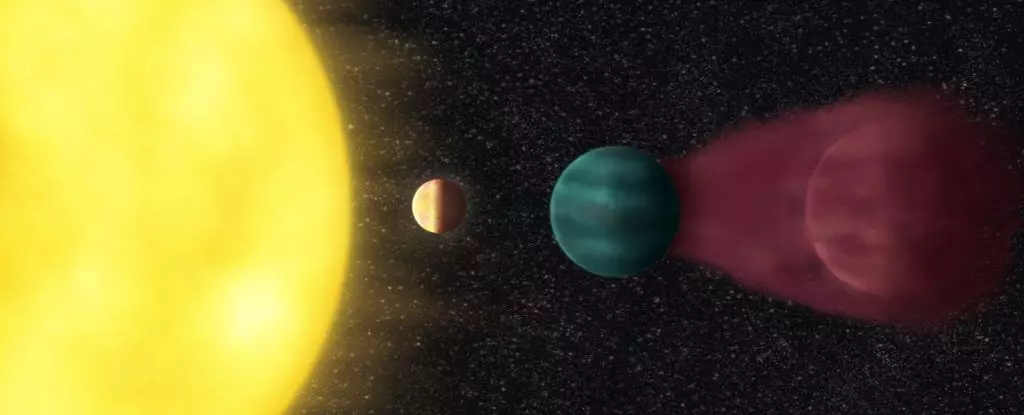An exoplanet, HD 63433 d, recently discovered just 73 light-years away, provides a unique opportunity to understand the early stages of Earth’s formation. While Earth remains the only known planet to harbor life, the study of exoplanets similar to our own can shed light on the conditions necessary for life to emerge elsewhere in the Universe. HD 63433 d is particularly intriguing because it shares similarities with Earth while also showcasing dramatic differences. This newborn exoplanet, slightly larger than Earth, orbits a star resembling our Sun, making it an invaluable object of study for scientists.
The TESS exoplanet-hunting telescope was responsible for detecting HD 63433 d. This revolutionary telescope surveys stars, searching for regular dips in starlight that indicate the presence of an orbiting exoplanet. By analyzing the effects the exoplanet has on the star’s light, astronomers can determine its size and mass. HD 63433, a yellow dwarf star closely resembling the Sun in size and mass, provides an ideal opportunity to study planets similar to Earth. However, it is important to note that HD 63433 is considerably younger, at only 400 million years old, compared to the Sun’s age of 4.5 billion years.
To date, the discovery of HD 63433 d and its characteristics have already unveiled some exciting details. Transit data from the exoplanet’s orbit reveals that HD 63433 d is roughly 1.1 times the radius of Earth, suggesting a composition similar to rocky planets like Earth, Mars, or Venus. However, its mass is currently unknown. The exoplanet orbits its star at a remarkably rapid rate, completing one orbit every 4.2 days. As a result of this swift orbit, HD 63433 d and its star are in extremely close proximity, potentially leading to tidal locking and causing one side of the planet to always face the star.
The close proximity to its star gives HD 63433 d an otherworldly environment, with an estimated temperature on the dayside reaching as high as 1,570 Kelvin (1,297 Celsius or 2,366 Fahrenheit). This extreme heat likely results in a surface composed of a permanent sea of molten rock, resembling a massive ocean of lava. Although Earth has never experienced such intense proximity to the Sun, a similar scenario may have occurred following a collision that led to the formation of the Moon, causing Earth temperatures to spike to around 2,300 Kelvin.
While much has been learned about HD 63433 d, there is still a great deal more to uncover. Scientists anticipate that further studies will provide insights into the exoplanet’s mass, which, in turn, will allow for calculations of its density and composition. Additionally, researchers hope to determine whether HD 63433 d possesses an atmosphere and, if so, what gases compose it.
The discovery of HD 63433 d and its proximity to Earth offer exciting prospects for future research. Scientists anticipate that studying this exoplanet and its neighboring stars, which are part of the same young group, will yield valuable information about the formation and evolution of planets. These findings will undoubtedly enhance our understanding of Earth-like planets and aid in the search for habitable worlds among the countless stars in the universe.
HD 63433 d, the exoplanet with a radius similar to Earth, orbiting a Sun-like star, holds immense potential for unraveling the mysteries surrounding the birth of rocky planets. As scientists continue to study this fascinating world, we can only anticipate more remarkable discoveries in the months and years to come. The knowledge gained from HD 63433 d will undoubtedly contribute to our understanding of the conditions necessary for life to arise and flourish beyond our own planet.
HD 63433 d serves as a captivating glimpse into what Earth may have looked like during its infancy, albeit in an extreme and turbulent environment. The discoveries made through studying this exoplanet provide invaluable insights into the formation of Earth-like planets and the potential for life beyond our Solar System. As researchers delve deeper into the mysteries of HD 63433 d, the scientific community eagerly awaits the unraveling of this remarkable celestial body’s secrets.


Leave a Reply